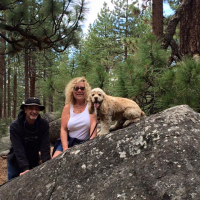In order to participate in the GunBroker Member forums, you must be logged in with your GunBroker.com account. Click the sign-in button at the top right of the forums page to get connected.
Please read: Not All reloading books are the Same!
 FrancF
Member Posts: 35,279 ✭✭✭
FrancF
Member Posts: 35,279 ✭✭✭
This comes up quite often and I am not the final word or Guru but just speaking from my own experience.
I started Reloading in 1983 with no experience. With the help of others at the time. I accumulated reloading manuals just to reload for the .44 mag. My first round!
But wanting to do it right, I got confused! this book said this, this book said that. I went to my local gun shop that got me hooked into reloading. With confusion on my face I explained my problem with all the books being different powders, bullets, primers. What do I do?
I got the answer that terrified me the most- More Books![:D]
Check-
Cross check-
and recheck-
And that's just the way I learned from Bench guys and pistol shooters. 1 reload book is not enough, 10-20 will get ya what you need to know for a safe start.
Other Reloaders add on-
I started Reloading in 1983 with no experience. With the help of others at the time. I accumulated reloading manuals just to reload for the .44 mag. My first round!
But wanting to do it right, I got confused! this book said this, this book said that. I went to my local gun shop that got me hooked into reloading. With confusion on my face I explained my problem with all the books being different powders, bullets, primers. What do I do?
I got the answer that terrified me the most- More Books![:D]
Check-
Cross check-
and recheck-
And that's just the way I learned from Bench guys and pistol shooters. 1 reload book is not enough, 10-20 will get ya what you need to know for a safe start.
Other Reloaders add on-


Comments
First, this question is usually voiced by beginning reloaders. Since that's not the only question they have, allow me to give the link http://www.reloadingroom.com/index_files/Reloading%20101.htm to my article called Reloading 101 which answers many such questions. (Note: Internet Explorer can scramble my pages. Use Firefox, Chrome or Opera, which all display perfectly.)
I always recommend a minimum of three manuals or three sources. First and of primary use is data published by the bullet maker. Bullets (even of the same weight) can and do have a huge influence on the peak pressure a load develops. Different diameters, length of bearing surface, jacket hardness and other factors are the reasons for this. So, use bullet-maker data as your prime source of load data.
Always crosscheck that with data from the powder maker. Powder makers test loads with a variety of bullets and often list data for the bullet that produced the highest pressures. With that bullet or any other, therefore, the data ought to be safe.
Finally, I recommend doing a final check using the Lyman manual. That's because Lyman makes neither bullets nor powder, but does do rigid laboratory testing using a variety of both. Using a third source also protects you against the chance of a typo in either of the other two sources - and they DO happen! If any of the three are greatly different than the others, use double caution - and trust the two that agree closest.
Lastly, always use current data if you are using current products. If you have a can of old powder or an old box of bullets, try to find data that was tested when they were made. Things DO change. Bullet design, powder specifications, or test methods can all change and such things can change load data. Beginning with START loads may seem overly wimpy, but that's the only protection you have if the data is wrong or your gun is one that shows pressure signs early.
Remember, the interval between trigger pull and disaster is far too short to change your mind!
The one safety thing that has bit me personally is this. NEVER reload when you cannot remove all distractions. That is different for different people. For me, once the primer hits the case I don't stop till all loads are finished, boxed up, all notations are made and I can put everything back on the shelf.
On other thing I found is that I always keep an eye out for old reloading manuals. Not only are they great reading but it's nice to find info on obsolete calibers.
Just my humble 2 cents